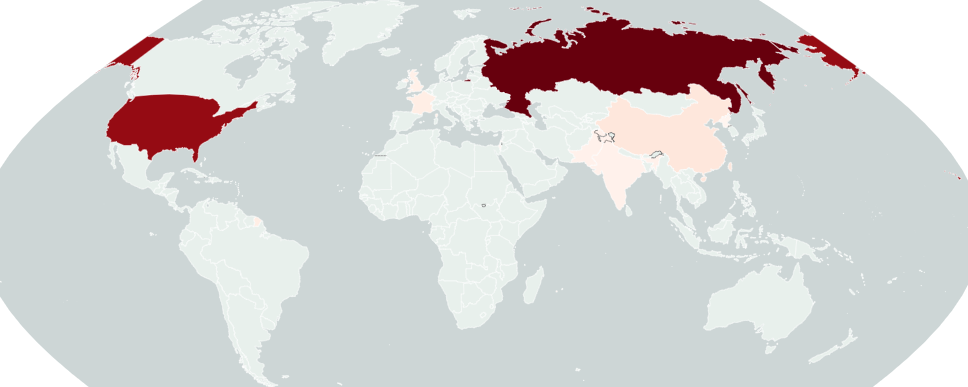Uncommon Knowledge
Newsweek is committed to challenging conventional wisdom and finding connections in the search for common ground.

The Carnegie Endowment for International Peace think tank this week wrote that the “prospects for negotiating formal arms control treaties appear dim” as the world’s foremost nuclear powers slide into a new era of competition and indirect conflict.
There are believed to be some 12,000 nuclear warheads spread between the world’s nine nuclear-armed nations, more than 10,000 of which sit in American and Russian arsenals.
The two adversaries are by far the best armed states in terms of nuclear weapons, with China (500), France (290), the U.K. (225), India (172) and Pakistan (170) all owning hundreds of their own.
Israel and North Korea, with an estimated number of 90 and 50 warheads, respectively, are the final two members of the nuclear club, with Pyongyang the youngest, having detonated its first atomic weapon in 2006.
The deteriorating global security situation has piqued long-held concerns over the lack of progress on arms control measures.
The threat of nuclear escalation has hung over Russia’s full-scale invasion of Ukraine since it began in February 2022, with that operation coming after years of deteriorating relations between Moscow and its Western rivals. The war has prompted closer cooperation between Russia and China, as well as with the rogue state of North Korea and nuclear aspirant Iran.
NATO leaders—including President Joe Biden—have been clear in their concern over a direct clash between nuclear powers and vowed not to involve allied troops directly in the conflict for fear of nuclear escalation. Fellow NATO leaders in France, Germany and the U.K. have expressed similar sentiments.
The Kremlin has been less hesitant, with President Vladimir Putin and several of his allies repeatedly hinting at nuclear—whether strategic or tactical—weapon use against Ukraine or its Western backers. In March, Putin warned that Russia was “ready” for a nuclear showdown.
But for all Moscow’s nuclear saber-rattling, Western intelligence and leaders have said there are no signs that Russia’s nuclear posture has shifted. In February—and after reports that Russia was developing a space-based nuclear weapon—Biden said: “First of all, there is no nuclear threat to the people of America or anywhere else in the world with what Russia is doing at the moment.”
He added: “No. 2, anything they’re doing or they will do relates to satellites in space and damaging those satellites potentially. No. 3, there’s no evidence they’ve made a decision to go forward with anything in space either.”
Newsweek is committed to challenging conventional wisdom and finding connections in the search for common ground.
Newsweek is committed to challenging conventional wisdom and finding connections in the search for common ground.